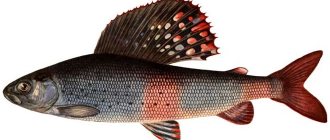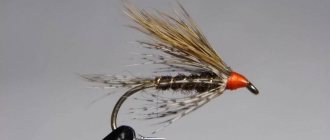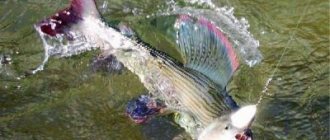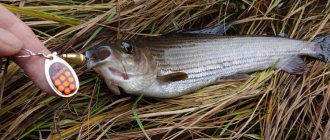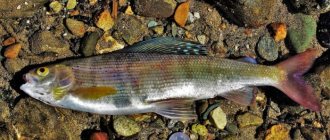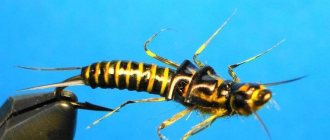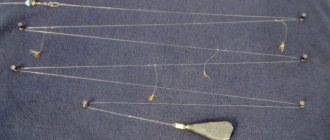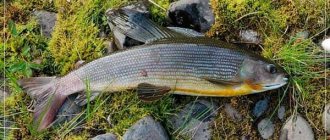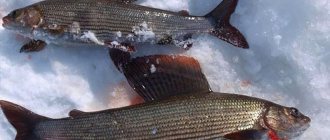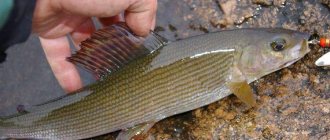Tackle for grayling is distinguished by its thinness and miniature size compared to equipment for catching other freshwater predators, and catching this cautious fish itself can be classified as a fishing gourmet, mostly accessible only to experienced fishermen. But despite all the difficulties in finding and catching grayling, fishing gear for this type of hunting is very diverse, which cannot but arouse the interest of an ordinary fisherman in this type of fishing. A variety of fishing tools allows you to master a certain branch of grayling fishing and improve your skills. In addition, the lifestyle of this fish and the types of gear for catching grayling make it possible to conduct year-round fishing in open water and during the freeze-up period.
In order to assemble tackle for grayling with your own hands, you only need to obtain the necessary information, which is what our article suggests, and acquire standard and widely available equipment and fishing accessories. Well, among the methods of catching a mysterious predator, every angler will be able to find exactly the one that is already familiar to him in technical terms when fishing for other types of fish and does not cause any particular difficulties in the process of using the gear in practice in real fishing conditions.
Gear selection
Tackle for grayling is selected based on fishing conditions arising from the factors of the structure of the fished reservoir and the behavior of the fish. Graylings live in cool rivers and flowing lakes, at various levels of water horizons, and their activity depends on both the time of day and the season of the year. After the ice melts, the predator begins to actively feed in the water column with any food of animal origin and becomes less suspicious and cautious in its behavior. The upcoming spawning directly affects such a non-timid way of life, which is unusual for fish.
In the spring, fishing for grayling with a fishing rod and line becomes the most popular and productive way of fishing. After spawning at the end of May, beginning of June, the predator becomes more cautious, but its aggressiveness does not decrease. During such a period, spinning fishing comes to the fore. Bombard and classic spinning fishing with spinners and small wobblers are used. With the massive emergence of insects, fly fishing plays a leading role in the production of grayling. The predator’s priority is all kinds of artificial flies and natural animal baits, consisting of various types of insects. Fly fishing continues until mid-September, when, with a steady cooling of the water, the fish descend to deep areas of reservoirs, where anglers switch to catching them using bottom fishing.
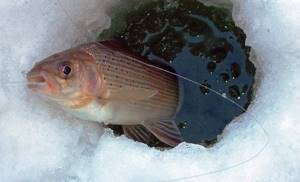
The freeze-up period allows you to hunt for grayling from the ice using vertical trolling and bottom fishing methods. The principles presented above for approaching the selection of promising gear will help the fisherman navigate the selection of the most effective fishing method. All that remains is to make adjustments to the structure of the reservoirs, selecting the necessary equipment and feel free to start fishing.
Grayling fishing in August
The water level in the rivers drops noticeably, but grayling continues to stick to the bottom depressions. In some regions with a harsh climate, grayling begins to gradually move to the lower reaches of rivers in August. Grayling fishing in August is promising, but the angler must be patient while searching for fish.
It is difficult to determine what fish likes this month. It is advisable to have a set of baits and lures with you. When fishing for grayling in August, it is necessary to cast against the current and float the bait to the maximum possible distance. This is true when fishing with any popular equipment for fishing grayling.
A noticeable cold snap in the second half of August forces grayling to prepare for the winter. In the last days of August, a mass migration of grayling to the lower reaches of rivers may begin. This is a great time to fish for grayling. During the period of mass movement, grayling bites on bait and lures.
If you thoroughly understand the question of how to catch grayling in the summer, and what grayling bites on, then throughout the entire period you can engage in exciting fishing and enjoy your catch. Salmon dishes have excellent taste and are good for the body.
Fishing for grayling using a spinning rod
Spinning tackle is one of the simplest tools for catching grayling. For the most part, light and ultra-light tackle is suitable for catching fish. Its length will rarely exceed 2.7 meters, and it itself should be distinguished by its lightness and ergonomic handle. After all, the dynamics of this method are quite high and a heavy spinning rod will quickly tire the fisherman. For sharp hooking you need a spinning rod with fast and even super-fast action. In addition, such tackle copes better with controlling the movement of spinners and wobblers. Inertia-free lightweight reels with a finely adjustable drag marking 2000–2500 units will ensure comfortable fishing and retrieving the trophy.
The spools are charged with a braided cord, the diameter of which is from 0.1 to 0.15 mm, which depends on the expected size of the trophy being caught. The main thread should be about one hundred meters.

Important! Leashes are not used in grayling fishing, and they try to tie baits directly to the cord, in rare cases using a miniature but reliable fastener.
Rotating spoons and wobblers with their own crank-type game are used as bait. According to the Meps classification, rotating spoons correspond to numbers ranging from 00 to 3. The Meps model Aglia in silver, copper, white and black colors with red large dots is considered a classic. Cranks for catching graylings rarely exceed 3–5 cm in length, imitating the shape of a small fish or any kind of insect. Sometimes, with specific equipment and certain fish behavior, it is possible to use a wet fly.
Fly fishing
Fly fishing is considered to be the most technically complex area of grayling fishing. And this factor concerns not only the set of equipment, but also the methods of casting and guiding baits. A special fly fishing rod for catching grayling of medium action is considered a universal tool that can be used on any type of reservoir, from lake backwaters to river rapids. The fly fishing rod is equipped with an inertial reel. For fly fishing in a universal design, a device of class 3–4 is considered. The reel requires winding backing, on top of which a polyfill cord is placed, which has high reliability combined with lightness and excellent aerodynamic qualities. A leash of a certain length, called a leader in fly fishing, is added to the cord, and an artificial fly or hook is attached to it, on which natural live bait is placed.

Depending on the fishing conditions, artificial flies are divided according to the depth of depth and are divided into dry and wet types. Making riding gear for grayling of a specific type requires the skill of selecting elements with certain performance characteristics that satisfy a narrow range of use of the gear. These conditions arise when fishing in rapids and shallow waters, as well as in water areas with snags and large stones. Fly rods are effective gear for catching grayling in the summer.
Installation of tackle for grayling fishing
It is impossible to make tackle for grayling using a single algorithm for all fishing conditions, but we will look at several catchy and unusual tackles. Using the instructions and setting the tackle correctly for grayling, even a beginner can get a large catch of grayling, and sometimes salmon are caught on the hook.
To install bombard-type tackle for grayling you will need:
- Styrofoam;
- sinker;
- monofilament line;
- cocktail tube or goose feather;
- moisture-resistant glue;
- swivels;
- stoppers made of silicone.
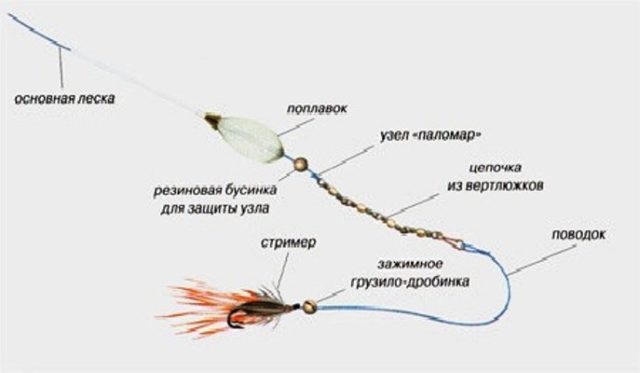
How to make a bombard:
- We cut out a float of suitable size and shape from foam plastic.
- We make a hole with a drill and insert a tube or feather into it.
- From the opposite edge we drill a hole to surround the float.
- Before inserting the sinker, we drill the same hole in it so that the tube penetrates the weight.
- We insert the tube into the workpiece, surround one side and glue everything together.
- After the float has dried, we pass the fishing line through it (stoppers are installed above and below the fishing line).
- We mount swivels on both ends of the fishing line: the upper one is designed for fastening to the base, and the lower one is for mounting leashes.
The next interesting tackle is “gossip”; it will require the same materials. Algorithm of actions for production:
- We take hard foam plastic and cut out 2 floats from it: we make one larger (approximately 10 cm in diameter), and the second - 3-4 cm.
- We install lead weights in both floats, through which we thread plastic tubes (prevent friction with the foam).
- We secure the floats with stoppers on both sides and connect them in series.
- The part of the fishing line between the floats is the basis for attaching leashes and flies.
There is an opinion that only wet flies are used on the “gossip”, but experienced fishermen who have caught a lot of grayling claim that dry flies are also effective.
Catching grayling with a float rod
A fishing rod for grayling with a float rig is a purely spring fishing tool. To catch a predator, two types of fishing rods are used - fly rod and Bolognese rod. Using fly float gear, grayling is caught at the boundaries of streams, feeding bait into calm water. Bologne is used in currents for wire fishing. The fishing rods are equipped with a monofilament line no thicker than 0.2 mm, ending with an even smaller leash of 0.10-0.12 mm. A medium-sized inertial light reel is installed on a Bolognese fishing rod.
For these types of hunting, pea-shaped floats are used. The choice of float is determined by the caution and timidity of the fish. The alarm must have high sensitivity, indicating even the smallest bite of a predator. The floats for grayling are painted horizontally in a gray color on the bottom, and the upper part in a noticeable scarlet color. The equipment is loaded with a garland of lead pellets cut to the center. The pellets are distributed along the length of the fishing line, thus increasing the sensitivity of the gear. Hooks are used in sizes corresponding to the size of the bait.
Important! It is worth considering that the use of hooks with reflections is unacceptable for grayling. The best color is considered dark blue or brown.
To catch grayling on a float rod, bloodworms, maggots, bark beetles or small fillet pieces of fresh fish are used as bait. It is effective to lure a predator into the fishing zone with cottage cheese, by creating a mud that attracts fish. The catcher is a method of installing two hooks in tandem, at a distance of 20–30 cm from each other. This specific equipment makes it possible to fish with different baits, determining a more promising option at the time of fishing.
Types of equipment
To catch grayling using a float, you can use different equipment that differ in individual parts and elements. According to the principle of action there are:
- with a bite alarm;
- without him.
Equipment with a float is used more often; it can be used when grayling is at the surface, in the water column, in the lower layers. A fishing rod without a bite alarm is relevant during periods when fish stay near the bottom, feeding on bottom invertebrates and insect larvae.
Grayling rig with float
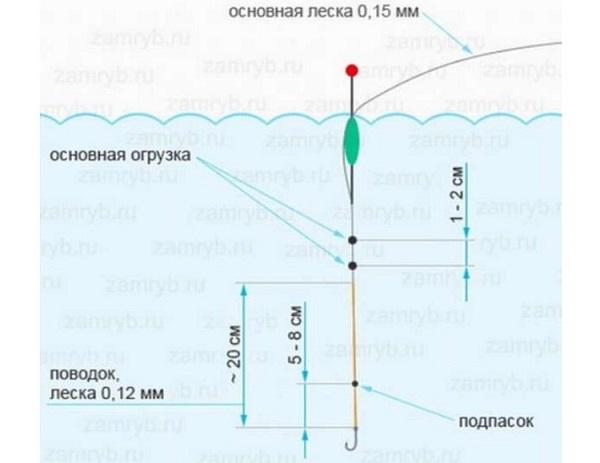
Any monofilament or fluorocarbon fishing line with a thickness of 0.16–0.2 mm is suitable for mounting the equipment. Sliding or stationary weights are placed on the main thread, then a leash 30–70 cm long is tied, depending on the fishing conditions. Then comes the undercut at a distance of 5–20 cm from the single hook.
Recommended reading: Tackle for carp with makukha
Such equipment is relevant in the summer during the period of mass emergence of various semi-aquatic insects, early spring, autumn and even winter, when grayling is inactive, stands near the bottom, feeds exclusively on benthic invertebrates, mollusks and small crustaceans.
Equipment without float
Floatless equipment is used in fast currents when the fish is standing at the bottom. Tackle diagram:
- The main line is inserted into the hole of the sliding sinker, which is secured from below with a small lead pellet, bead or locking knot.
- A leash 30–50 cm long is tied to the free end of the main fishing line. It is better to fix it through a swivel to minimize twisting of the thread.
- All that remains is to attach a hook or jig to the outlet.
When fishing, the equipment works like this. The fisherman places a worm, maggot, or insect larva on a hook and throws it into the water. The sinker sinks to the bottom, and the leash sways due to the influence of the current on it. After 5-15 seconds, the rod is twitched slightly so that the weight rises and jumps to the next point.
How to catch grayling using bottom tackle
Grayling fishing in the fall switches to the use of bottom rigs, which have a number of very interesting varieties. When fishing small rivers with shallow depths and moderate current forces, bottom equipment called a bale is used. The bale is controlled using a short and rigid spinning rod, complete with an inertial reel equipped with a braided cord up to 150 meters long. At the end of the cord, a structure is installed, consisting of a rocker arm, to the shoulders of which monofilament leashes are attached. A wire leash with a sinker of 15–30 grams is attached to the central part of the rocker. Wet flies of the most promising colors in the fishing region are used as bait.

The second method of bottom fishing, called bulldozing, is used in strong currents and great depths. Bottom mounting is based on a rigid rod 4–6 meters long, equipped, as in the first version, with an inertial reel with braid. The cord is equipped with a massive sliding float, which has its own release. The design of the boom for catching grayling has a main sinker and three monofilament leashes with an artificial fly attachment. The hunting technique involves dragging baits with the current along the bottom of the reservoir, which is achieved by increasing the actual depth with the main sinker by one and a half to two meters. A float that has disappeared from the surface of the water indicates an attack by a predator and the moment of hooking.
Grayling fishing in June
With the onset of calendar summer, grayling fishing depends on the completion of the fish spawning. In each region, post-spawning feeding begins at different times. This period should be monitored, since during the recovery period the grayling feeds heavily, and this is an excellent time to catch it.
Grayling fishing in June is carried out in the bottom layer and in the water column. When fishing with a spinning rod, a Tyrolean rod rig with a leash up to 1 m long is successfully used. The bait carried away by the current plays and becomes the “prey” of hungry grayling. In June, small spinners and wet flies are suitable. Grayling can be caught with a fly throughout the summer. The main thing is to choose a bait with appropriate buoyancy.
The grayling bite is affected by weather conditions. Fish activity is observed on cloudy days. When the sun is hidden behind the clouds, grayling bite throughout the daylight hours in June. A stable bite in June is also observed in rivers flowing among tall trees, the crowns of which shade areas, and favorable conditions are created for the habitat of grayling.
Ice fishing
Winter fishing for grayling is similar to the technique of perch fishing, and therefore, similar equipment can be used for these purposes. For vertical trolling, winter fast-action spinning rods with 50–70 cm rods and an inertial reel are used. To supply baits, monofilament fishing line with a diameter of 0.2 mm is used. Grayling fishing does not need leashes, and the lure is tied directly to the fishing line.
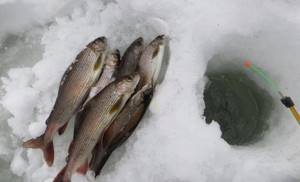
By size, medium-sized perch spoons are selected with the brightest colors, which have a sharp but stable play in amplitude. To make the simulator attractive, the hooks are equipped with red threads or cambrics. In fishing spots where currents have low speeds, fishing is promising with winter balalaika-type fishing rods equipped with a thin monofilament with a diameter of about 0.12 mm. The bait for the balalaika is an ordinary perch jig, and the playing technique is not much different from the prey of the striped robber.
Important! The most catchable forms of jigs are the ant and banana modifications.
At great depths, over five meters, heavy tungsten jigs are used, which, with the same dimensions as their lead counterparts, reach the bottom faster. This type of bait - a sinker - works more stably on currents with sharp animation, especially if, in addition, the jig imitates the natural food of grayling and amphipod.
Features of winter grayling fishing
When planning to catch grayling in winter, you must remember that this fish stays near the edge of holes in fast currents, and identifying such places in winter conditions is practically very difficult.
To do this, you will have to cut an incredible number of holes and determine such a place by trial and error. But you can do it easier by noticing such places in the fall, by trees or some other characteristic features of the area.
You need to take note for yourself that in winter grayling bites at a certain period of time. You definitely won’t be left without a catch if you fish either early in the morning, before sunrise, or in the evening at sunset. However, in cloudy and cloudy weather, grayling can bite all day, but not as actively as on other days. To catch the morning fishing and prepare your gear for this, it is better to arrive at night 1-2 hours before dawn.
Now let’s decide on the basic postulates for choosing a fishing location. To do this, you need to determine the depth by making several test holes. The holes should be located as close as possible to the main stream, since this is where you can find the coveted fish. The distance between the holes should not be less than 20 cm, but their number should be sufficient so as not to miss any opportunity to catch fish.
Winter fishing for grayling is a special winter bait because it is different from summer bait. In winter, grayling bait must be given exactly where it is, otherwise there will be no bites. The most attractive can be considered “no-attachment” tin or lead jigs with a golden color. Grayling is caught in winter using a regular perch rod 30-40 cm long.
A nod 5-8 cm long is used quite hard. The line on a reel with a diameter of 0.20-0.25 mm should be at least 25 meters. You need to fish with a jig weighing 1-2 grams, shaped like a shot or a drop. On such a jig with a long fore-end, you can attach an edge of feathers by wrapping them with nylon thread. If the bite is good, the grayling will take it even without bait on such jigs, but you can also attach a jig, worm or maggot.
Also in winter they fish with summer flies by attaching them to the main line through leashes 25-30 cm long. With such gear, a load of 5-8 grams is attached to the end of the main line, depending on the strength of the current. The number of leashes and the distance between them depends on the depth, but there should be no more than three.
Bites occur sharply and unexpectedly, so you need to be on guard so as not to miss the fishing rod, and in some case not leave it unattended, not secured.
